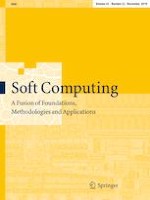09.01.2019 | Methodologies and Application
An efficient character recognition method using enhanced HOG for spam image detection
Erschienen in: Soft Computing | Ausgabe 22/2019
EinloggenAktivieren Sie unsere intelligente Suche, um passende Fachinhalte oder Patente zu finden.
Wählen Sie Textabschnitte aus um mit Künstlicher Intelligenz passenden Patente zu finden. powered by
Markieren Sie Textabschnitte, um KI-gestützt weitere passende Inhalte zu finden. powered by
